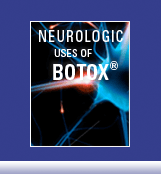![]()
 |
Treating a Cluster Headache Attack

Acute cluster headaches are considered to be some of the most severe recurrent pains known for man to suffer. The pain is so severe that some cluster patients have been known to kill themselves because of the attacks. During the acute cluster headache attacks (i.e. the clusters) the patient should avoid wine and medications that contain nitrates.
Sphenopalatine Ganglia Block (SPG Block)
SPG block is now possible using a device that is placed by a physician througth the nose. One of these devices is Allevio™. With this device, lidocaine, a local anethetic is used to produce the block. It also blocks the 2nd branch of the trigeminal nerve. This treatment not only treats an acute headache but appears to help prevent future headaches. There is limited controlled data at this time. Most insurances will pay for this therapy at this time. This therapy can safely be done during pregnancy. Bellaire Neurology currently offers this therapy to patients.
Oxygen Therapy
Oxygen is the long-standing treatment for an acute cluster attack. While it is not useful for everyone, for those that do benefit, it becomes the mainstay of acute headache therapy. Unless you have lung disease, (or an open flame), it is essentially side effect free. It is critically important, however, that the oxygen treatment attempt is done properly. First, use oxygen tanks and not an oxygen concentrator. Oxygen concentrators provide a lower percentage of oxygen in the air (typically 90%) but most importantly, cannot deliver the high flow rates that are required for cluster patients. The mask must be a non-rebreather mask with an excellent seal on the face. In this way, the patient will receive a very high concentration of oxygen. Finally, a high flow rate (start at 15 liters) per minute) should be used. If the oxygen works well, you can experiment with decreasing flow rates to find the flow rate that you need. Many patients only need a 7 liter flow rate and the tanks you get will last twice as long at 7.5 liters per minute than 15 liter per minute. Using a demand valve with early hyperventilation may improve the effectiveness of oxygen {Demand valve oxygen: a promising new oxygen delivery system for acute treatment of cluster headaches. Rozen TD, Fishman RS, Pain Med 2013 Apr;14(4):455-9 Epub 2013 Jan 31}.
Gammacore
For those willing to travel to Canada or Europe, Gammacore® is an electronic device that delivers current to the Vegas Nerve. A small open label study in Europe found that 13 of 14 patient found it useful for their cluster headaches with the majority (12/14) reducing or stopping their prior abortive. Most importantly 13 of 14 patients were either very satisfied (5) or satisfied.
SPG Stimulation
Approved in Europe, SPG stimulation by a device made by Autonomic Technologies appears to potentially treat the painful attack along with preventing future attacks. {Stimulation of the sphenopalatine ganglion for cluster headache treatment. US studies are in progress at the time of this writing (August 2014). {Pathway CH-1: A randomized, sham-controlled stuy. Schoenen J, et.al. Cephalgia 33(10) 816-30}
Additional Treatments
For patients whom oxygen does not work, Imitrex® injections are usually the treatment of choice since the injections typically work faster than tablets. If the headaches last longer or the patients are “needle-phobic”, then Zomig® or Imitrex® nasal spray is commonly tried. If this is not successful, then any of the fast acting triptan tablets (Axert®, Imitrex®, Maxalt®, Zomig®) can be tried. Unfortunately, many patients have difficulty getting their insurance to pay for their acute triptan use. Injections are commonly used at a very high rate during cluster attacks with evensome patients having multiple attacks per day.
Less commonly used are DHE (dihydroergotamine) injections. These injections are harder to give than Imitrex® because they are not in prefilled syringes and are given either IV or IM (intramuscular). When DHE is given by IV, it requires pre-treatment with an anti-emetic and a saline slush. Some people prefer Imitrex to DHE because Imitrex has fewer side effects. This is particularly true when given in relatively frequent doses which is what is required when treating cluster headache attack as compared to a migraine. Both the triptans and DHE are contraindicated in patients with ischemic heart disease. This makes treating older patients somewhat more complicated than younger patients. We are waiting for an inhaled form on DHE which we hope to be available soon. It was going to be called Levadex but apparently the name will be changed when it is released.
Of course, treating acute attacks should be only part of the initial plan in treating patients with acute cluster headaches. Physicians that do not start the patient on a cluster headache prevention agent are not treating the entire disease.
Source for Gammacore data:



